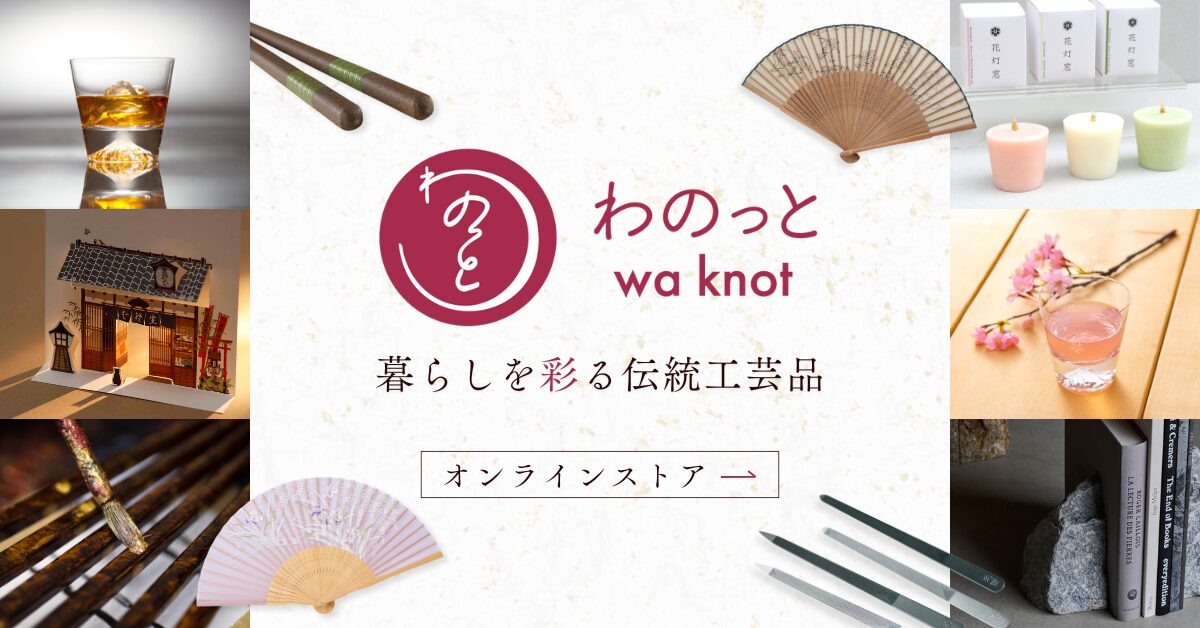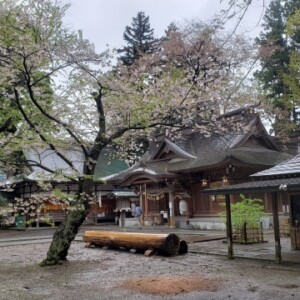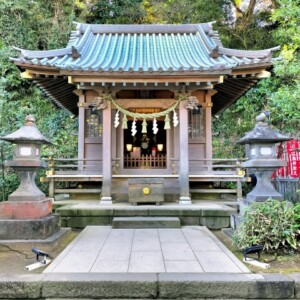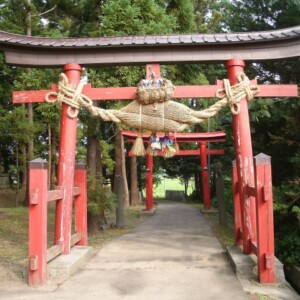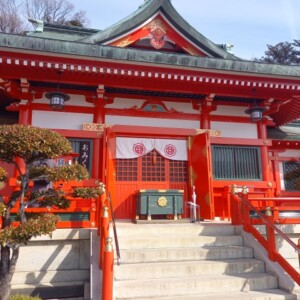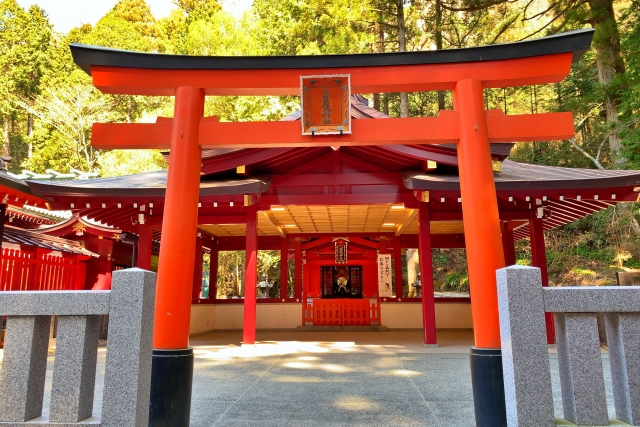
Kutouryuu Shrine (Hakone Town)|A complete guide to the mysterious power spots of Lake Ashinoko and the history of dragon god beliefs
Kutouryuu Shrine, located on the shore of Lake Ashi in Hakone Town, Kanagawa Prefecture, is a mystical power spot known for its matchmaking and financial protection. The shrine has a long history, beginning with the legend of Manmaki Shonin who reformed a poisonous dragon, and is visited by many worshippers from all over Japan on the 13th of each month for the monthly festival. The shrine enshrines the Dragon God in two forms, the main shrine and the shingu shrine, and visitors can purify their bodies and minds in the sacred space surrounded by the beautiful nature of Lake Ashinoko.
Overview and basic information about Kutouryuu Shrine (Hakone Town)
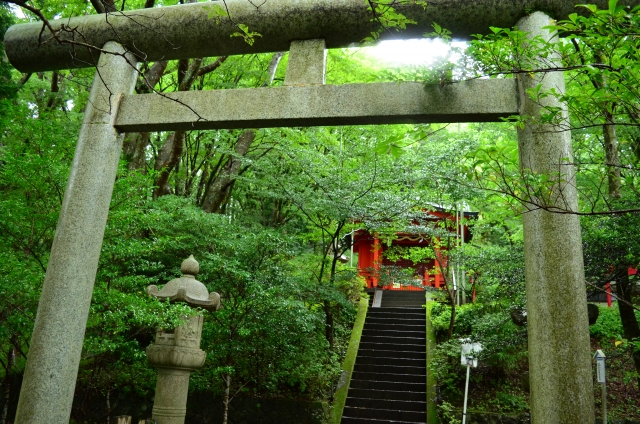
Kutouryuu Shrine enshrines “Kutouryuu-okami”, the guardian deity of Lake Ashinoko, and is positioned as a shrine outside the Hakone Shrine grounds. The shrine is currently divided into two locations, the main shrine and the shingu shrine, both of which enshrine the same Kutouryuu-Daikokami.
History and Origin
The origin of Kutouryuu Shrine dates back to the Nara period (710-794). A long time ago, Mamaki Shonin (the high priest who built the Hakone Shrine), who had come to Hakone for ascetic training, learned that a poisonous dragon living in Lake Ashi was tormenting the people of the village, so he built a platform on a small rocky island near the lake and chanted the Maharaja Haramita Sutra to subdue the poisonous dragon. The incarnation of the poisoned dragon, after being reformed, was enshrined in the forest near the lakeside as the Dragon God, the Lord of Lake Ashinoko.
At that time, when Lake Ashi was called Manji Pond, nine poisonous dragons inhabited the pond and tormented the villagers. In 757, following the Hakone Shrine, the Kutouryuu Shrine (main shrine) was built on the shores of Lake Ashinoko, the sacred place associated with the birth of the nine dragons.
Deities and Benefits
The deities of Kutouryuu Shrine are Kutouryuu-taijin, the Great Kutouryuu Deity. He is worshipped as the god of water and attracts many worshippers as the dragon god of fortune, good fortune, prosperous business, and good luck in marriage. In recent years, the shrine has become especially popular among women as a shrine for “matchmaking,” and there is no end to the number of visitors who come to pray for a good marriage.
As the “god of water and good marriage,” the shrine is well known as a place of great spirituality that is visited not only by villagers but also by many others.
Highlights of Kutouryuu Shrine (Hakone Town)
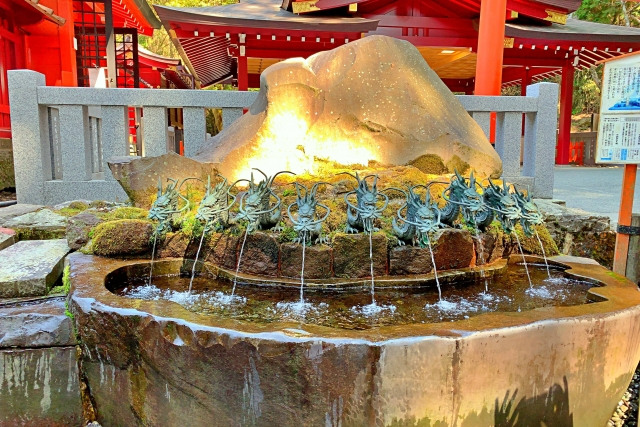
The most distinctive feature of Kutouryuu Shrine is that it is located in the beautiful natural environment of Lake Ashi. The main shrine is located on the shore of the deeply forested lake, while the new shrine is erected on the grounds of Hakone Shrine, each with its own distinct charm.
Mysterious location on the shore of Lake Ashi
On the east side of Lake Ashi on Hakone Mountain, a small torii gate can be seen on the lake. Kutouryuu, the god of Lake Ashinoko, is enshrined at this location with a forest spreading out before it. The main shrine is located deep in the forest on the north side of Lake Ashinoko, and a small path named “Therapy Road” leads to the shrine, where you can enjoy the nature of Lake Ashinoko to the fullest.
Kutouryuu Shrine stands in the forest by Lake Ashinoko. The main shrine is a power spot visited by many people, especially young women. The shrine is a mysterious space that usually stands quietly in the quiet forest, allowing visitors to feel the power of nature while worshipping here.
Differences and Characteristics between Hongu and Shingu
Kutouryuu Shrine has a main shrine and a shingu, each with different characteristics. The “Kutouryuu Shrine (Hongu)” is located at the sacred birthplace of the Great Kutouryu God on the shore of Lake Ashi, and the “Kutouryuu Shrine (Shingu)” was built in later years next to the Hakone Shrine Shrine, the sacred site of the Lake Festival.
On New Year’s Day of the Year of the Dragon in 2000, Kutouryuu Shrine (Shingu) was built as a shrine that is easier to visit than the main shrine, which is more difficult to visit, and also allows visitors to quickly visit both shrines and Hakone Shrine.
Ryujinsui (dragon god) water and sacred spots
In front of the Shingu Shrine, there is a spring of sacred water called “Ryujinsui” that can be drawn. It is said that “if you rinse your palms and rinse your mouth with this water, it will wash away all impurities.
In the Shingu, there is also a “Shojo-suisu-ban” (water basin for accomplishment of one’s goal) next to it. There is a special way to pray to Kutouryuu-Daishin by putting your wishes and vows on the “oaths” given at the omenshuji and pouring them out with the dragon water from this seishousuiban.
The White Dragon Shrine, with its white torii gate and shrine, which is rare in the area around the main shrine, has been gaining popularity in recent years. The shrine, which enshrines the deity Shiryū Ryūdaijin, is located on the shore of a lake not far from the main shrine of Kutouryuu Shrine, and many visitors come to visit this shrine as well.
Guide to Prayer
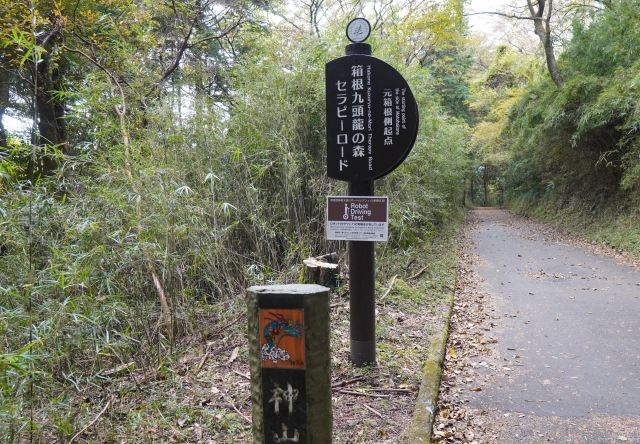
Kutouryuu Shrine is divided into two locations, the Main Shrine and the Shingu Shrine, each with a different method of visitation and access. Please be mindful of proper etiquette when visiting this sacred shrine.
Worship Etiquette and Manners
When worshipping at Kutouryuu Shrine, please follow the general etiquette for shrine visits. First, purify your body and mind at the water closet and bow lightly before heading to the main shrine building. When visiting the shrine, pray with all your heart in the manner of “Ni-hai, Ni-hatte, Ichi-hai,” and express your gratitude and wishes to Kutouryuu-ohjin.
There is a special way to worship at Shingu. The “oath” to the Great Deity of the Kuzuryu is made at the “Shojo-sui-ban” located in front of the Shingu of the Kuzuryu Shrine, next to the Dragon God’s water! First, write down your wish on the “oath”. Next, write a “kishinbun (written oath),” in which you pledge to do what you must do in order for your wish to be fulfilled, followed by the date and your name, and then pour it into the “seijyuban.
If you are praying for a good marriage, you should try to visit both Kutouryuu Shrine and Hakone Shrine. It is believed that by visiting both Hakone Shrine and Kutouryu Shrine, you will receive greater blessings.
Monthly Festival and Annual Events
At Kutouryuu Shrine, important festivals are held regularly. The Monthly Festival is held on the 13th of each month, and the annual festival is held on June 13th of each year. The main shrine is held on the 13th of each month at 10:00 a.m., while the monthly ritual is held on the 15th of each month at the Shingu shrine.
The Tsukinamisai is held on the 13th of each month at 10:00 a.m., and is crowded with many people in attendance. The Tsukinamisai is a very popular place for women to pray for good marriages, and it is said that 80% of the attendees are women. During the Tsukinamisai, a “lake water ritual” is held in which four items of surume and eggs offered at the ceremony are divided into nine portions and offered to the Great God Kutouryu in the lake.
Other important annual events include the New Year Festival on January 13, the regular festival on June 13, and the Kozuchi Ryujin Festival on August 4. On the evening of July 31 every year, the Lake Festival of Hakone Shrine is also held, and a mysterious ritual is performed on Lake Ashi.
Red Seal and Charm Information
Red seals and amulets for Kutouryuu Shrine are always available at Hakone Shrine, Hakone Motomiya Shrine, and the three Kutouryuu Shrine shrines. Please note that since there are no priests stationed at the main shrine, oshin (red seals) are available only at the Oshokusho (seal office) located under the stone steps of Hakone Shrine (next to the parking lot).
Goshuin are available at four shrines: *Hakone Shrine *Kutouryuu Shrine *Hakone Shichifukujin Ebisu Shrine *Hakone Motomiya Shrine. A Goshuin book is also available for 1,500 yen, with the Hakone Shrine shrine pavilion on the front cover and Mt.
Various types of good luck charms are available, including the Hanaamamori (flower amulet) for sound body and happiness, the Fuku-ring amulet for good health, the five-color gourd amulet for good health, the staff amulet for long life and sound legs, and the treasure pot amulet for protection of money.
Access and use information
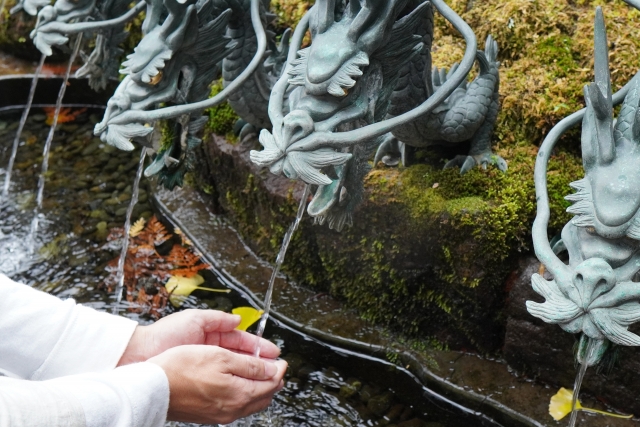
Access to Kutouryuu Shrine differs greatly between the main shrine and the shingu shrine. The Shingu shrine is located within the Hakone Shrine grounds and is easy to visit, while the Hongu shrine is deep in the forest by Lake Ashi and requires a special access method.
Access
Access to Hakone Shrine and Kuzuryu Shrine Shingu
Access by train is 60 minutes from Yumoto by bus bound for Hakone/Moto-Hakone, or 75 minutes from Odawara Station by bus bound for Hakone/Moto-Hakone. From Yumoto, you can also enjoy the following route: take the mountain railway to Gora Station (last stop), take the Hakone Ropeway to Togendai Station (last stop), take the Ashinoko sightseeing boat to Moto-Hakone Port, and walk 10 minutes.
Access to the main shrine of Kutouryuu Shrine
To visit the main shrine, you can either go by boat or on foot. If on foot, it is a 30-minute walk from Hakone-en and The Prince Hakone Ashinoko to the lakeside promenade on foot.
The more common route is to take the Hakone Tozan Bus (T line) from Hakone-Yumoto Station, transfer at the “Togendai” stop (approx. 41 minutes), take the Odakyu Hakone Express Bus (W line, bound for Hakone-en), get off at the “Hakone-en” stop (approx. 4 minutes), and walk for approx. 30 minutes.
On the day of the Getsuji Matsuri, a special boat will be in service: 9:20 from Moto Hakone Pier 9:45 from Kamiyama Pier 9:50 from Kuzuryu Shrine main shrine 10:00 from Kuzuryu Shrine main shrine for the Getsuji Matsuri ceremony.
<Address> 80-1 Moto-Hakone, Hakone-cho, Ashigarashita-gun, Kanagawa Prefecture
Hours of Operation, Fees, and Parking Information
Kutouryuu Shrine Shingu
Since the shrine is located within the precincts of Hakone Shrine, the opening hours are the same as those of Hakone Shrine. The Oshucho and Goshinin (seal) Office is open from 8:15 a.m. to 5:00 p.m. and the prayer office is open from 8:30 a.m. to 4:00 p.m. There is no charge to visit the shrine, but an additional fee is required for amulets and red seals.
Kutouryuu Shrine Main Shrine
Visitors can enter and pray in the Kutouryu Forest at any time between 9:00 am and 5:00 pm (last admission at 4:30 pm), but an admission fee is required. When visiting the main shrine of Kutouryu, visitors must pass through the Kutouryu Forest, which requires an admission fee of 600 yen. However, on the mornings of the 13th, the monthly festival, and other festival days, the entrance fee is waived for visitors only.
For parking, visitors are required to use the paid parking lots around Hakone Shrine. When heading to the main shrine of Kutouryuu Shrine, use the Hakone-en parking lot (fee required) and walk from there.
Reference sites
Hakone Shrine (Kutouryuu Shrine) official website: https://hakonejinja.or.jp/
Hakone-cho Tourist Association official website: https://www.hakone.or.jp/539


